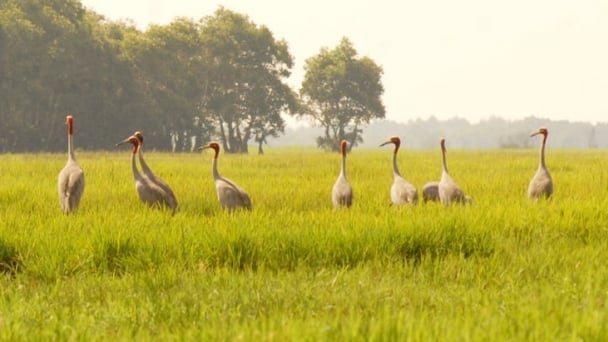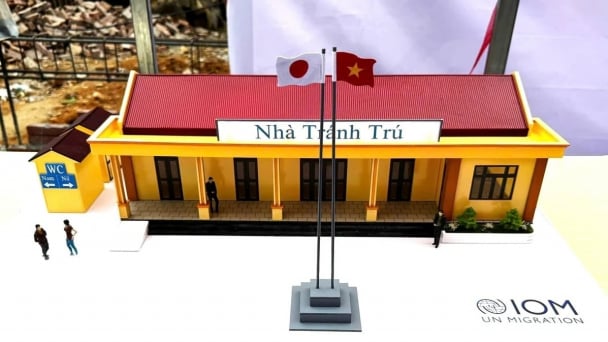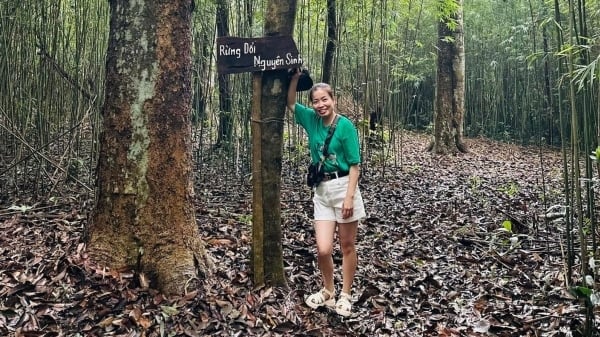August 1, 2025 | 22:59 GMT +7
August 1, 2025 | 22:59 GMT +7
Hotline: 0913.378.918
August 1, 2025 | 22:59 GMT +7
Hotline: 0913.378.918
The massive development of acacia but lack of planning and use of seeds and planting on inappropriate sites with unsustainable farming techniques has resulted in low economic and environmental efficiency for the value of acacia forests, thereby leading to misperceptions about the role of acacia.

Acacia wood is used to make joinery boards. Photo: Hong Hai.
Currently, the acacia area in our country has reached over 2.2 million ha, accounting for 60% of the total 3.69 million ha of production forests. Some varieties such as acacia mangium, acacia auriculiformis and hybrid acacia have been identified as key forest plants of lowland areas where the altitude is below 700m above sea level.
These species have confirmed their important role in greening bare hills and bare land, improving soil, preventing erosion and providing main source of raw materials for the country's wood processing industry and forest products exports. Acacia plantations have created economic benefits and contributed to poverty alleviation in mountainous areas.
However, plans for acacia planting in some localities are still not detailed and clear thus does not adhere to the requirements of acacia development. Some acacia forests are planted in unsuitable climate and soil conditions such as the altitude is over 700m above sea level and the slope is high (>35o). Some areas even face frequent eddy winds and storms above level 8.

Assoc. Prof. and Dr. Phi Hong Hai, Deputy Director of the Vietnamese Academy of Forest Sciences.
There is an issue relating to local people who spontaneously cultivate acacia not following any plan thus most of acacia forests are poorly growing, easy to be damaged, causing landslides and greatly affecting economic efficiency. Currently, the Ministry of Science and Technology has published many Vietnamese standards on site requirements for planting acacia mangium, acacia hybrid (TCVN 11366-1:2016) and acacia auriculiformis (TCVN 11366-3:2019). It is very necessary to apply such standars correctly when developing detailed plans for acacia growing areas in the localities.
Varieties are extremely important to determine the productivity and quality of planted forests. They have contributed to increasing the average yield of acacia plantations in our country from 10cu.m/ha/year to 17-19cu.m/ha/year in recent years.

A 10-year-old planted acacia forest in Binh Duong province. Photo: Hong Hai.
Up to now, the Ministry of Agriculture and Rural Development has recognized dozens of varieties for acacia. However, the number of varieties commonly used in production is limited. The transfer of new varieties is slow, and the shelf life of some varieties is too long and not rejuvenating, leading to breed degeneration, reducing the physiological quality and affecting the whole productivity and quality of planted forests..
Moreover, many organizations and individuals still consider national and advanced varieties can be technically planted in any area, so they do not use the right varieties for their planting sites.
Another factor affecting the productivity and quality of acacia forests is the application of technical measures in intensive plantation. Many farmer households are growing acacia following the method of extensive afforestation with a high density (usually over 2,000 plants/ha) and without taking care of them.

There should be orientation for large acacia plantations with new varieties of high-quality. Photo: NNVN.
The clearing of vegetation and burning before planting is also very common in many localities, leading to environmental pollution, increasing soil erosion, and in the long term causing degradation for arable land. Another thing is that most of the local people who participate in afforestation with acacia just do it for the purpose of planting in 5-6 years or even only 4 years. They often cut down to sell to traders for making paper or paper materials and this has led to an over exploitation of the soil nutrients, at the same time caused a reduction for the timber output and economic inefficiency.
To develop sustainably and bring high economic efficiency to acacia growers, it is necessary to:
- Choose the right site for acacia planting (especially the height above sea level should be <700m; slope <25o; soil layer of 50-100cm). Areas with frequent eddy and storm winds above level 8 are not suitable for acacia. A well management should be maintained to limit organic burning after the exploitation.
- Use suitable varieties for each site; use good quality seedlings with priority given to the use of seedlings from tissue culture.
- Use fertilizers rationally for planted acacia forests. Acacia has the ability to preserve nitrogen, so it is necessary to use fertilizers rich in phosphorus to enhance the nitrogen fixation activity of the plants; Limit plowing of topsoil, especially on sloping land to avoid soil erosion and reducing water retention.- Plant in the right density of 1,300 - 1,600 trees/ha; apply proper pruning and thinning by taking techniques to create high-quality large timber forests.
In acacia plantation, it is necessary to increase the forest business cycle, the most reasonable from 7 to 12 years to achieve high economic efficiency, create large timber, and increase the ability to improve the forest environment; apply low-impact exploitation, such as maintaining and supporting silvicultural road system by applying proper techniques; limit the opening of new roads while exploiting; especially pay attention to drainage systems to avoid water accumulation that creates flows with high risks of causing erosions and landslides.
Translated by Linh Nguyen
![Golden sea, sustainable vision: [3] Fisheries co-management towards UN Development Goals](https://t.ex-cdn.com/nongnghiepmoitruong.vn/608w/files/content/2025/08/01/ngu-dan-3-155002_353-090350.jpg)
(VAN) The community-based philosophy of fisheries co-management has transformed management thinking, empowering fishers to work together to protect the marine environment and promote sustainable livelihoods.

(VAN) Tram Chim National Park is striving to restore its natural habitat in hopes of bringing back the red-crowned cranes and establishing a breeding population in the Dong Thap Muoi.
![Golden sea, sustainable vision: [2] Revitalizing fisheries, reducing IUU violations](https://t.ex-cdn.com/nongnghiepmoitruong.vn/608w/files/chinq/2025/07/30/4659-dsc04845-134645_15.jpg)
(VAN) The Tan Thuan fishing community task force provided 126 valuable leads to functional agencies, helping to prevent and penalize 65 violations.

(VAN) The International Organization for Migration (IOM) has reaffirmed its commitment to continue providing technical assistance, policy advice, and capacity building based on the priorities proposed by the Vietnamese side.
![Golden sea, sustainable vision: [1] The concerns of veteran fishermen in coastal areas](https://t.ex-cdn.com/nongnghiepmoitruong.vn/608w/files/content/2025/07/30/bien-ham-thuan-nam-lam-dong-binh-thuan-130242_21-083526.jpeg)
(VAN) For the hundreds of fishermen in Tan Thanh commune, restoring marine resources serves as a guiding principle that drives their direct involvement in protecting the sea alongside local authorities.

(VAN) The ecotourism development project in protection forests opens up opportunities to boost the economy in tandem with forest conservation, laying the foundation for sustainable development in Quang Ninh.
![Wood processing for export under EUDR: [3] Adaptive solutions](https://t.ex-cdn.com/nongnghiepmoitruong.vn/608w/files/huyenvt (e)/2025/07/28/5937-1-194314_293.jpg)
(VAN) To resolve bottlenecks and remove difficulties for the exported wood processing industry, the People's Committee of Gia Lai Province has implemented solutions to adapt to EUDR regulations.